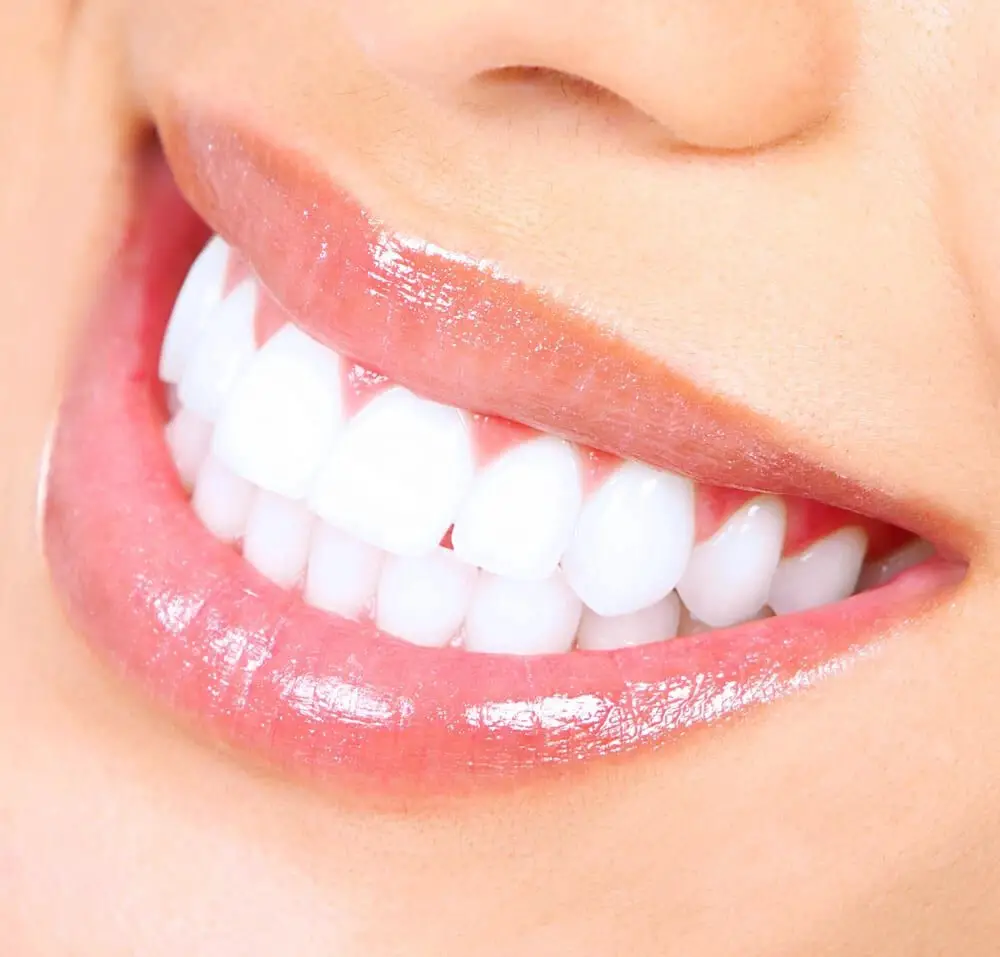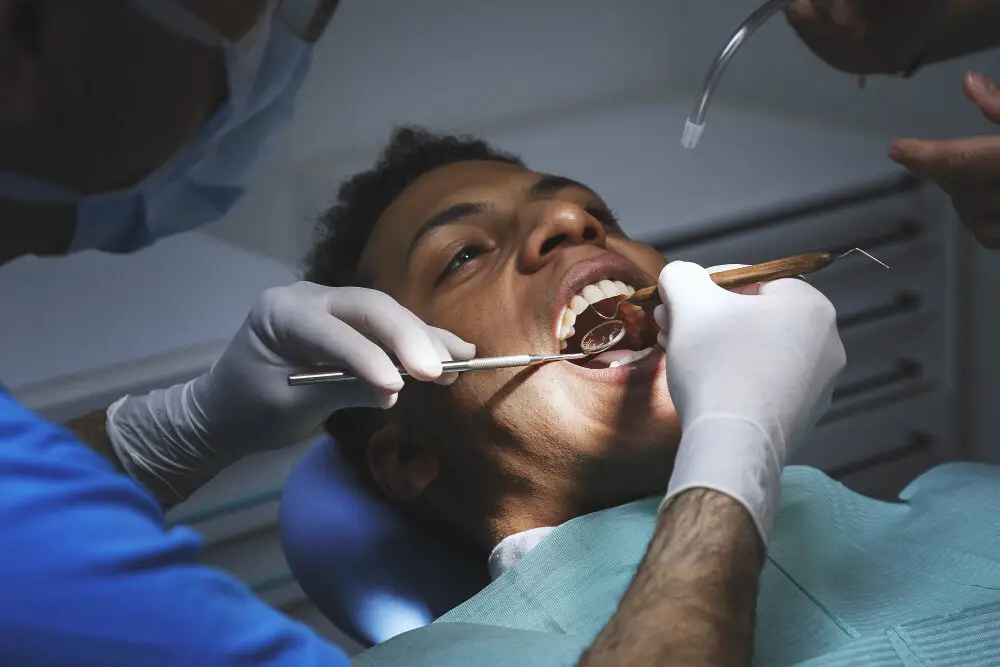When Can I Safely Use a Straw After Wisdom Teeth Extraction?

Wisdom teeth extraction is a common procedure that many people have to undergo at some point in their lives. One of the most frequently asked questions after the surgery is when they can safely use a straw. This is because using a straw can create suction, which may dislodge the blood clot that forms in the socket where the tooth was removed. Therefore, it is important to know when it is safe to use a straw to avoid any complications. The answer to this question largely depends on the individual’s healing progress and the type of extraction they had. In general, it is recommended to wait at least 24 hours before using a straw after wisdom teeth extraction. However, some dentists may advise waiting longer to ensure that the socket has fully healed and the blood clot has stabilized. It is essential to follow the specific post-operative instructions provided by the dentist to ensure a smooth and successful recovery.
Wisdom teeth extraction is a dental procedure in which the third molars, commonly referred to as wisdom teeth, are removed. This procedure is usually performed under local or general anesthesia, depending on the complexity of the extraction. Wisdom teeth are often removed due to a lack of space in the mouth, which can cause pain, swelling, and infection. In some cases, wisdom teeth may grow in at an angle or only partially emerge from the gums, which can lead to further dental problems. After the procedure, patients may experience some discomfort and swelling, but these symptoms can be managed with pain medication and ice packs. It is important to follow post-operative instructions carefully, including avoiding the use of straws for the first few days after extraction to prevent dislodging the blood clot that forms in the extraction site.
Following postextraction instructions is crucial for ensuring a smooth and pain-free recovery after wisdom teeth extraction. These instructions are designed to prevent complications such as bleeding, infection, and dry socket. Failure to follow these instructions can result in prolonged healing time, increased discomfort, and a higher risk of developing complications. It is important to avoid using straws as the suction created can dislodge the blood clot that forms in the extraction site, leading to dry socket. Patients should also avoid smoking, rinsing their mouth vigorously, or consuming foods that are too hot or spicy. By following the postextraction instructions provided by the dentist or oral surgeon, patients can ensure a smooth and uneventful recovery, allowing them to return to their normal activities as soon as possible.
Why Shouldn’t You Use a Straw After Wisdom Teeth Extraction?

After a wisdom teeth extraction, it is essential to take care of your mouth. One of the most common post-operative instructions is to avoid using a straw. You may wonder why using a straw is not recommended after the extraction. The reason behind this is that the suction created by using a straw can cause a dry socket. A dry socket occurs when the blood clot that forms over the extraction site is dislodged or dissolved, exposing the bone and nerves underneath. This condition can be extremely painful and can delay the healing process. Therefore, it is crucial to avoid using a straw for at least a week or until your dentist gives you the green light. In addition to causing a dry socket, using a straw can also increase the risk of infection. When you create suction with a straw, you are essentially pulling bacteria from your mouth into the extraction site. This can introduce harmful bacteria into the wound, causing an infection. An infection can cause swelling, pain, and delay the healing process. Therefore, it is essential to avoid using a straw and to maintain good oral hygiene by gently rinsing your mouth with saltwater or mouthwash as recommended by your dentist. Following these instructions can help you have a smooth and comfortable recovery after your wisdom teeth extraction.
Dry socket is a painful condition that may occur after a tooth extraction, particularly after wisdom teeth extractions. It happens when the blood clot that forms in the socket where the tooth was removed dislodges or dissolves before the wound has healed. This exposes the bone and nerves in the socket, causing severe pain, bad breath, and an unpleasant taste in the mouth. Dry socket is more common in smokers, people with poor oral hygiene, and those who have had difficult extractions. To prevent dry socket, it is essential to follow your dentist’s instructions carefully, avoid smoking, and limit physical activity for a few days after the extraction. If you develop dry socket, your dentist can provide you with pain relief and help you manage the symptoms.
Using a straw after wisdom teeth extraction can increase the risk of developing dry socket, a painful condition that can delay the healing process. When you suck through a straw, the negative pressure created can dislodge the blood clot that forms in the socket where the tooth was removed. This blood clot is essential for healing, as it protects the nerve endings and bone from external stimuli and bacteria. Without this protective barrier, the socket becomes exposed, leading to pain, infection, and delayed healing. Therefore, it is recommended to avoid using a straw for at least the first week after extraction to ensure proper healing.
Dry socket is a common complication that can occur after wisdom teeth extraction. It is characterized by severe pain in the extraction site, which can radiate to the ear and the surrounding areas. Other symptoms of dry socket include bad breath, a foul taste in the mouth, and visible bone in the socket. The pain can be intense and can make it difficult to eat, drink, or speak. Dry socket usually develops a few days after the tooth extraction, and it is more common in lower wisdom teeth extractions. If you experience any of these symptoms, you should contact your dentist immediately to receive treatment and alleviate the pain.
When Can You Safely Use a Straw After Wisdom Teeth Extraction?

After a wisdom teeth extraction, it is important to avoid any activities that can cause negative pressure in the mouth, such as smoking, using a straw, or spitting. Negative pressure can dislodge the blood clot that forms in the extraction site, leading to a painful condition called dry socket. Therefore, it is recommended to wait at least 24 hours before using a straw after wisdom teeth extraction. However, some dentists may advise waiting longer, depending on the individual case. It is important to follow your dentist’s instructions to avoid complications and ensure a speedy recovery. When using a straw after wisdom teeth extraction, it is also important to take precautions. The suction created by using a straw can dislodge the blood clot and cause dry socket. To avoid this, place the straw at the back of the mouth and avoid creating too much suction. Drinking slowly and not using a straw that is too narrow can also help prevent negative pressure. If you experience any pain or discomfort while using a straw, stop immediately and consult your dentist. Remember that the healing process after a wisdom teeth extraction varies from person to person, so it is important to follow your dentist’s instructions and take care of yourself during the recovery period.
The healing process after wisdom teeth extraction is a complex series of events that involve inflammation, clot formation, tissue regeneration, and remodeling. Once the tooth is removed, the body starts to form a blood clot to protect the exposed bone and nerves. This clot is essential for the healing process as it promotes the growth of new tissue and acts as a barrier against bacteria and food particles. Over time, the clot will be replaced by granulation tissue, which is made up of blood vessels, collagen, and fibroblasts. This tissue will eventually turn into scar tissue, which will help to strengthen the site of extraction. The entire healing process can take several weeks, and patients are advised to follow all post-operative instructions to ensure that the area heals properly and without complications.
The timeframe for the healing process after wisdom teeth extraction varies depending on the individual and the complexity of the procedure. Generally, the initial healing phase lasts for the first 1-2 weeks, during which time the site will be tender and swollen. The gum tissue will gradually close over the extraction site, and a blood clot will form to protect the area. Over the next few weeks, the bone and soft tissue will continue to heal, and the gum tissue will start to shrink, leaving a small depression where the tooth was removed. It is important to follow the post-operative instructions provided by your dentist and avoid using a straw for the first few days after surgery to prevent dislodging the blood clot and delaying the healing process. After the initial healing phase, most people can resume normal activities, including using a straw, but it is important to listen to your body and follow your dentist’s recommendations to ensure proper healing and minimize the risk of complications.
There are several factors that can influence the healing time after wisdom teeth extraction, such as the individual’s age, overall health, and lifestyle habits. Younger individuals tend to heal faster than older ones, and those with good overall health may also recover more quickly. Smoking, drinking alcohol, and not following proper oral hygiene practices can also slow down the healing process. Additionally, the severity of the extraction, the number of teeth extracted, and any complications that may arise during or after the procedure can also impact healing time. It is important to follow your dentist’s instructions closely and attend any follow-up appointments to ensure proper healing and recovery.
Alternative Ways to Stay Hydrated After Wisdom Teeth Extraction

After wisdom teeth extraction, staying hydrated is crucial for a speedy recovery. However, traditional methods of drinking fluids such as using a straw can potentially dislodge the blood clot and prolong the healing process. There are alternative ways to stay hydrated after wisdom teeth extraction that are safe and effective. One alternative is to use a small spoon or medicine dropper to slowly sip water or other fluids. This method allows for controlled intake of liquids without creating suction in the mouth that can dislodge the blood clot. Additionally, consuming foods with high water content such as watermelon, cucumbers, and soups can also contribute to hydration. It is important to avoid sugary or acidic drinks as they can irritate the healing site and cause discomfort. By utilizing these alternative methods, you can ensure that you stay hydrated without compromising the healing process.
After wisdom teeth extraction, it is important to be cautious when consuming any type of liquid. Drinking from a cup can be a safe and effective method as long as certain precautions are taken. It is recommended to use a small cup to prevent excess liquid from entering the mouth, which can potentially dislodge the blood clot and delay the healing process. Additionally, taking small sips and avoiding any straws or other objects that require suction can help minimize the risk of complications. While drinking from a cup may seem like a simple task, it is crucial to approach it with care after having wisdom teeth removed.
Using a syringe after wisdom teeth extraction is a common practice to clean the sockets and promote faster healing. However, it is important to follow the instructions of your dentist carefully to avoid any complications. Typically, the syringe is filled with a saltwater solution and gently injected into the socket to remove any food particles or debris. This process helps to keep the area clean and prevent infection. It is recommended to wait at least 24 hours after the extraction before using a syringe and to continue using it for a few days until the socket has fully healed. It is also important to use a soft-bristled toothbrush and avoid smoking or consuming alcohol during this time to ensure a smooth recovery.
Eating foods with high water content is an excellent way to stay hydrated and nourished after wisdom teeth extraction. These foods are typically low in calories and high in nutrients, making them a great option for those who may have difficulty eating solid foods. Some examples include watermelon, cucumber, berries, and leafy greens. In addition to providing hydration and nutrition, these foods can also help to soothe any discomfort or inflammation in the mouth. Incorporating high-water-content foods into your diet is a simple and effective way to promote healing and ensure a smooth recovery after wisdom teeth extraction.
Tips for a Smooth Recovery After Wisdom Teeth Extraction

Wisdom teeth extractions are quite common, and they can be a bit of a hassle during the recovery period. But with the right tips and tricks, your recovery can be smooth and easy. First and foremost, it’s crucial to follow your dentist’s instructions to the letter, as they know what’s best for your specific case. This includes taking any prescribed medication as directed, eating only soft foods for a certain period of time, and avoiding smoking and alcohol. You may also need to use ice packs on your face to reduce swelling, and rinse your mouth with salt water to promote healing. Another important factor in a smooth recovery is taking care of yourself overall. This means getting enough rest, staying hydrated, and avoiding any strenuous physical activity. You should also avoid using straws or smoking for at least a week after your extraction, as the suction can disrupt the blood clot that forms in the socket and delay healing. By being gentle with yourself and following your dentist’s advice, you can make the recovery process as painless and quick as possible. Remember that everyone’s recovery is different, so don’t hesitate to reach out to your dentist if you have any concerns or questions along the way.
Proper oral hygiene is essential for maintaining healthy teeth and gums, especially after wisdom teeth extraction. It’s crucial to keep the surgical area clean to prevent infection and promote healing. Brushing your teeth gently twice a day and rinsing your mouth with saltwater or an antiseptic mouthwash can help remove food particles and bacteria. Avoid using a straw for the first few days after the surgery, as it can dislodge the blood clot that forms in the socket and delay healing. Additionally, avoid smoking and eating hard or crunchy foods and follow any instructions provided by your dentist or oral surgeon to ensure a successful recovery. Remember, good oral hygiene practices can prevent many dental problems and keep your smile healthy and bright.
After wisdom teeth extraction, it is crucial to take adequate precautions to avoid any complications and promote a speedy recovery. One of the most important things to consider is avoiding certain foods and activities that can impede the healing process. For example, hard and crunchy foods such as nuts, chips, and popcorn should be avoided as they can damage the healing tissue. Additionally, activities such as smoking, drinking alcohol, and using straws can create negative pressure in the mouth, causing dry sockets and delaying the healing process. To ensure a smooth recovery, it is essential to follow the dentist’s instructions carefully and avoid any activities that may cause harm to the healing area.
Managing pain and discomfort after wisdom teeth extraction is crucial to ensure a smooth recovery. It is essential to follow the post-operative instructions provided by the dentist, including taking prescribed pain medications as directed. Applying ice packs to the affected area for the first 48 hours can also help reduce swelling and discomfort. Rinsing with warm salt water can help clean the area and promote healing. It is important to avoid using a straw for the first few days after extraction, as the suction can cause bleeding and delay healing. Instead, opt for soft foods and avoid hot, spicy, or crunchy foods that can irritate the surgical site. With proper care and management, pain and discomfort can be minimized, and the healing process can be smoother and quicker.
In summary, the use of a straw after wisdom teeth extraction should be avoided for at least 24 to 48 hours. This is because the suction created by the straw can dislodge the blood clot that forms in the extraction site, leading to a painful condition known as dry socket. After the first 48 hours, using a straw is generally safe as long as the suction is kept to a minimum. Patients should also avoid drinking carbonated beverages, smoking, and vigorous rinsing for the first few days following the procedure to promote proper healing. It is important to follow the post-operative instructions provided by the dentist or oral surgeon to ensure a smooth and comfortable recovery.
Following postextraction instructions is crucial for proper healing and recovery after wisdom teeth extraction. Ignoring or disregarding these instructions can result in complications and prolong the healing process. These instructions often include avoiding using straws, smoking, and consuming certain foods and beverages. Using a straw after wisdom teeth extraction can dislodge the blood clot, leading to a painful condition called dry socket, which can delay healing and require additional treatment. Patients should follow their dentist or oral surgeon’s instructions carefully and ask any questions they may have to ensure a smooth and successful recovery. It is important to prioritize proper postoperative care to prevent any further complications and ensure a speedy recovery.
If you have recently undergone wisdom teeth extraction, it is crucial to follow the aftercare instructions provided by your dentist. Although many people may feel hesitant or nervous about reaching out to their dentist, it is essential to seek personalized advice to ensure the best possible outcome. Your dentist can provide expert guidance on when it is safe to use a straw after wisdom teeth removal, as well as other important considerations like pain management, diet, and oral hygiene. By consulting with your dentist, you can ensure that you are taking the proper steps to promote healing and avoid complications. So, don’t hesitate to reach out to your dentist for personalized advice and support during your recovery.
Conclusion

In conclusion, the use of a straw after wisdom teeth extraction should be avoided during the first few days to prevent dislodging of the blood clot and delay the healing process. However, after the initial few days, it is generally safe to use a straw as long as it is done carefully and gently. It is important to follow the aftercare instructions provided by your dentist or oral surgeon to ensure a smooth and speedy recovery. It is also advisable to consult with your dentist if you have any concerns or experience any complications during the healing period. Overall, with proper care and caution, using a straw after wisdom teeth extraction can be done safely.







